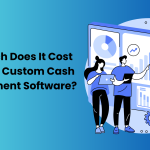Both Mangopay and Stripe have been around for over a decade. They both have established themselves as leading players in the online payment processing industry. Payment management software solutions help businesses with payments and financial-related solutions. They enable individuals and enterprises to accept, process and manage payments over the internet.

Although there are various alternatives to these two payment gateways, such as Mollie, Veem, Adyen and Paylike, to name a few. There are particular markets where one may be preferred over the other. Navigating the differences will help us understand the crucial factors that influence their competitiveness.
Considering the European marketplaces, we often hear that Mangopay is a far better option than the Stripe service. Is this a fair statement? What specific features and services make it a winner in the European market? Eventually, what integration and customization options Mangopay offers for its users? That’s precisely what we’re going to discuss in this article.
Before diving deep inside the comparison, let’s take a bird’s-eye view of the Mangopay and Stripe payment platforms.
What is Stripe?
Stripe is a popular and widely used payment management platform that allows businesses to make, receive and manage online payments. Its highly user-oriented service facilitates debit and credit cards, digital wallets and local payment methods. Serial investors and entrepreneurs always lookout for a payment management service that offers APIs and excellent integration tools. And Stripe is undisputed in that. It is a developer-friendly software solution marked by its robust nature and easy integration of payment processing into websites and applications.
Features
- Stripe’s cutting-edge features include convenience of subscription billing, seamless invoicing, and fully customizable checkout experiences
- The Stripe payment software is ergonomic for developers and has an extensive suite of documentations
- It is a highly scalable platform and works with businesses of all sizes
- It handles all types of currencies, credit cards and banks
- With seamless security and certified PCI level 1 system, Stripe is considered to be one of the most secured payment management service
- Stripe is globally available in 46 countries from Europe, Asia, North America, South America and Oceania
What is Mangopay?
Now coming towards what is Mangopay? Mangopay offers a comprehensive payment solution to handle third-party transactions, and online payments from fintechs, marketplaces and crowdfunding websites. Usually, Mangopay works with an end-to-end infrastructure of electronic wallets for its buyers, sellers and other roles to move, split and collect payments.

Mangopay operates in Europe and supports multiple currencies, making it suitable for businesses operating within the European market. With Mangopay, businesses can seamlessly manage funds, escrow payments and verify users in compliance with legal requirements for payments in the UK and the EU. This makes it a suitable platform to address the needs of the European entrepreneurs.
Features
- Mangopay provides features including automatic payouts, split payments, and payment flows that may be customized to meet the requirements of online markets
- It is a highly customizable platform with white-label APIs. White-label API enables clients to manage custom payment flows depending on their business models
- Know Your Client (KYC) mechanics and anti-fraud program served by Mangopay allows fast, secure and flexible transfer of payments for crowdfunding platforms as compared to the traditional bank transfers.
- MANGOPAY is used by over 2,500 platforms, such as Vinted, Yescapa, Twago, Campanda, and many more
Although they both provide payment processing services, Stripe and Mangopay target distinct markets within the online payments ecosystem. Mangopay focuses on offering payment infrastructure specifically designed to meet the requirements of online marketplaces and crowdfunding platforms, whereas Stripe serves a wide spectrum of enterprises seeking flexible and customizable payment solutions.
Comparison Between Mangopay & Stripe for the European Market
As simple as it seems, the comparison between Stripe and Mangopay is a convoluted one. To accurately compare the two, we must consider the following factors:
1: Compliance & Regulation
Payment processing must strictly abide with European rules, such as GDPR and PSD2. It is essential to assess each platform’s compliance with these rules and how it manages sensitive consumer data. Mangopay only operates in European-based marketplaces as it provides compliance with EEA regions.
2: Payment Type & Methods
Stripe offers a free trial for its users and does not require your buyers to register on your website. On the flip side, Mangopay does not offer a free trial. Payment methods and types supported by each platform in Europe should also be taken into consideration. Offering a variety of options can boost conversion rates, as some customers prefer certain payment methods over others.
3: Fees & Pricing Structure
Assess the pricing models of the two platforms, taking into account any costs associated with European transactions as well as transaction and currency conversion fees. Remember that these costs might have an effect on your profitability.
Mangopay charges a registration fee and a fixed fee per transaction, while Stripe does not charge a setup fee and has a percentage based on each transaction. Because MangoPay is targeted at marketplaces and comparable platforms, its prices are more clear than those of Stripe.
4: Supported Countries & Currencies
In Europe, Stripe and Mangopay accept a diverse range of countries and currencies. Depending on the geographic reach of your company, the depth of their coverage may be a crucial factor. Mangopay offers support for a wide range of currencies, including minor and major ones. Stripe also supports major currencies but the range of its supported currencies depends on the country where your business is being operated.
5: Customer Services
The quality of customer service provided is an essential parameter to compare both platforms. Customer service offerings in terms of availability, quality, paying special attention to languages that are widely spoken throughout Europe are significant factors to notice. A responsive support system can be essential for promptly addressing problems and ensuring seamless payment processing.
Stripe and Mangopay both offer phone, email, live support, ticket and training to its customers.
6: Integration
Evaluate how simple it is to integrate with your current systems and whether development tools and documentation are available. This factor has a big influence on how well implementation and continuous maintenance go.
With adaptable payment workflows and the capacity to interface into current systems with ease, Mangopay provides a more flexible integration flexibility. On the flip side, Stripe makes it easier for businesses to get started quickly by offering ready-to-use frameworks and plugins that simplify the integration process.
7: Reputation & Reviews
When deciding between Stripe or Mangopay for your business in Europe, it’s important to read reviews and testimonials from similar businesses to gain valuable insights into the strengths and weaknesses of each platform.
Final Verdict: Who is Better for the European Market – Stripe or Mangopay?
By far, we know that there is no silver bullet to this comparison. Finalizing one as a “better” option for the European market will ultimately rely on some important factors. Mangopay is only recommended for the European market due to its compliance with the legal requirements for the payments. However, Stripe service provider is always there in the picture as an option for the European market.

Know Your Customer (KYC), offered by Mangopay, is not a mandatory process for many business models. However, escrow and split payment services are much needed in B2C and C2C B2C. Therefore, if your business model requires escrow and split payments, you must consider Mangopay.
On the other hand, Stripe offers to defer payments for up to 30 days approximately. This could be ideal for goods’ marketplaces (the release of payments once the goods are delivered). If you’re dealing in goods (and not services since service delivery price may be changed with respect to the timing), Stripe can help you grow in the best way possible.
Lastly, you need to carefully analyze your business goals, requirements and preferences before choosing the best online payment service provider for your business. This article should not be considered as a basis for final verdict, instead as a guide to assist your decision-making.




